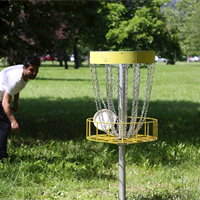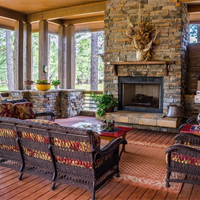A brief history of beard styles
- Dunja Božić
- 6 min
- 30 January 2020.
- Good stories
According to some research, men tend to grow beards the most when they are not in fashion. However, we have witnessed that beards have been trendy in the past few years, and they continue to be a part of style today.
Throughout history, men have benefited from beards. Research spanning thousands of years tells us that men used beards to keep their faces warm and for intimidation. Cold winters required every available means to warm the face, and the beard was the most practical solution. Additionally, a beard can "enhance" the jawline, giving the face a rougher and more intimidating appearance. Beards were also grown to protect the skin from the sun and the lips from sand and other dirt. Today, beards serve to showcase masculinity, authority, fashion, and status.
Ancient Egyptians used false beards, often made of metal. The beard could come in various shades of brown and would be tied around the head with bands. During the same period, in Mesopotamia, men took great care of their beards. They used various oils to care for their beards, paid attention to their appearance, used beard irons to shape them, and created curls. Assyrians dyed their beards black, and in India, a long beard was nurtured as a symbol of wisdom and dignity.
Honor and Wisdom
In ancient times, in Greece, beards were a sign of honor. Ancient Greeks would often curl their beards to create "hanging" curls, and beards were only cut as a punishment. Greek aristocrats cultivated the cult of the beard as a symbol of male maturity. In Greece, beards were worn until the time of Alexander the Great, when around 345 BCE, Alexander decreed that soldiers should not have beards for fear that the enemy might grab them and bring them down to the ground.
Until 300 BCE, the Romans did not shave, and they adorned their beards with various beads. Daily shaving was introduced by the military commander Scipio Africanus. During the same period, a group of Greek-Sicilian barbers was recorded to have traveled from Sicily to mainland Italy, setting up barber shops on the main streets of Rome that were used by people who did not have slaves. Slowly, shaving became a trend in ancient Rome. Only philosophers kept their beards.
All Roman emperors, from Augustus to Trajan, shaved, but when Caesar was assassinated, Augustus grew a beard as a sign of mourning.
Beards, Mustaches, or Clean Shaven
Anglo-Saxons wore beards until the advent of Christianity when beards were prohibited by law in order to follow trends and fashion. However, the Crusades brought back beards in a big way, and for the next four centuries, all types and lengths of beards were allowed. Men could choose between a beard, just a mustache, or a completely clean-shaven face.
The earliest known barber organization was founded in 1096 in France when William, the Archbishop of Rouen, banned the wearing of beards. This ban led to the formation of barber-surgeon organizations.
Barber Surgeons
Starting from the 11th century, barbers were respected as surgeons. People would come to them for medical treatment and then also for shaving and haircutting. Trained physicians were in constant conflict with barbers as a result. They also practiced dentistry and retained that privilege in some regions until the 16th century.
After the Catholic Church declared that priests, as the most educated class, should not engage in medicine, that task was entrusted to barbers. Thus, they began performing the duties of doctors and carried out medical procedures such as skull trepanation, limb removal, and similar practices.
Barber's Procedure
The most radical barber procedure is called "bloodletting." During this procedure, the barber would use a small razor to make a cut on the client's vein and allow their blood to flow into a special container. Later, this container with the blood would be displayed in a visible place for everyone to know that the barber performs this procedure. The mess created during this "bloodletting" was cleaned up by barbers using white bandages that would be washed and reused. This ritual was the inspiration for the creation of the symbol of barbers, the red-and-white striped pole. The white color in this symbol represents the act of "bloodletting," while the red color represents the bloody bandages. The ball on top of the pole represents a bowl filled with leeches, which barbers also used for therapeutic purposes, while the bottom part represents a bowl into which the blood flowed during the "bloodletting" procedure.
In regions under Ottoman rule, it was said that the Ottomans swore by the Prophet's beard because the beard was a symbol of honor and prestige for them, following the example of Muhammad. In Russia, Peter the Great brought a significant change to the tradition of wearing beards. He shaved his beard according to Western European fashion and imposed a beard tax.
In the early 17th century, the painter Sir Anthony van Dyck began painting aristocrats with pointed beards. This beard style was called the "Van Dyke" beard, and men used creams or wax to shape their beards. They applied wax using a special comb.
The First Barber School
In 1893, A. B. Moler from Chicago founded the first barber school. It was the first institution of its kind in the world, and its success was evident from the very beginning. It advocated for high education standards within the ranks, and the main school was quickly followed by branches in almost every major city in the United States. Initially, the schools focused on the practice of shaving, haircutting, and facial treatments since the public was not ready to accept scientific hair, skin, and scalp treatments. Shaving was a laborious job. High-ranking barbers worked up to 12 hours a day to master a range of skills, from shaving, cutting, and styling to making and selling hairpieces. Barbers also made wigs.
Many barbers from the 19th century turned their work into economic independence and, in several cases, investments that brought them extraordinary wealth. In numerous American cities, African American barbers were among the richest and most powerful members of the free black community.
Beard Styles
There have been numerous beard styles throughout the centuries. We have the style that Abraham Lincoln popularly called the chinstrap beard. This style involves the beard extending along the jawline and face. Such a beard adds fullness to the appearance of men with narrower faces.
American President Rutherford B. Hayes made the "full beard" famous, which includes a long beard and mustache.
In Europe, men started shaping their beards and mustaches during World War I, and when the war ended, mustaches took over by storm.
Clark Gable introduced a new style that lasted for about 10 years. Thin mustaches close to the upper lip - pencil mustaches. Even writer George Orwell embraced this elegant look.
English musician Lemmy Kilmister sported a beard style called the "friendly mutton chops."
Another facial hairstyle is the goatee. The "Van Dyke" is when only hair around the chin and mustache remains on the face.
American wrestler Hulk Hogan was known for his "handlebar mustache" style. These are full mustaches with ends that extend parallel to the jawline.
Barber Shops
Today, beards are extremely popular. The influence of current trends has led men's hair salons to be renamed as barber shops. In Belgrade, in the past few years, many barber shops have opened, offering a complete service of beard grooming and haircuts.
Beards are currently in vogue, but it's only a matter of time before smoothly shaven faces become fashionable again.
Beard Trivia
The longest beard belonged to Hans Langset and measured 5.3 meters.
Fear of beards is called pogonophobia.
98% of Forbes' richest list comprises of clean-shaven men.
Beards grow faster in the sun and can block up to 90% of harmful UV radiation.
If a man never shaved, his beard could grow up to 8.4 meters.


